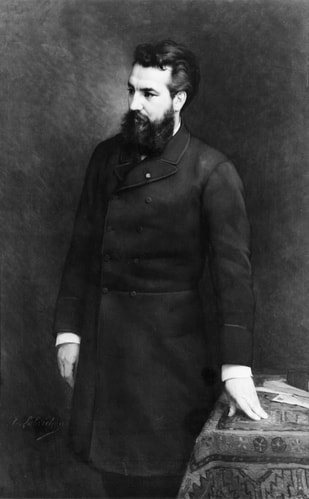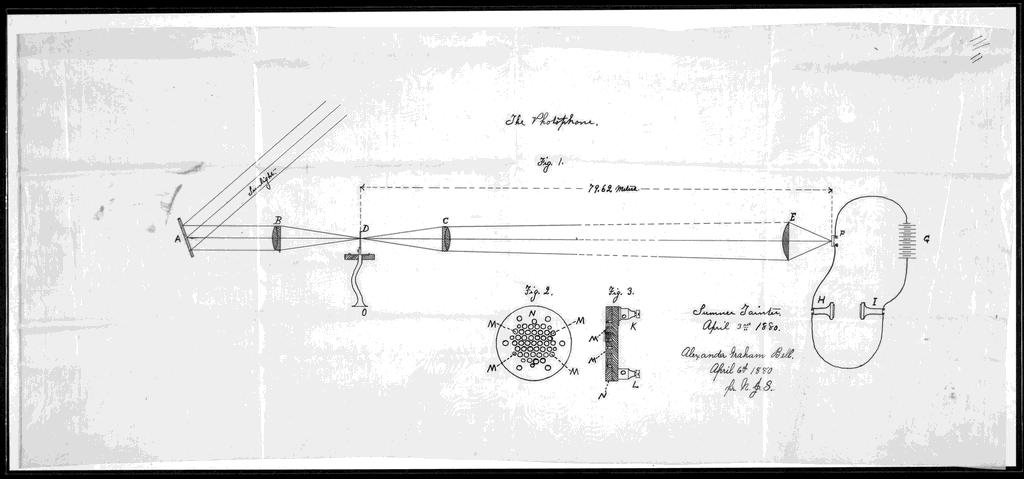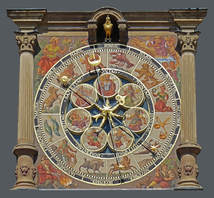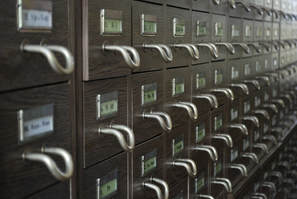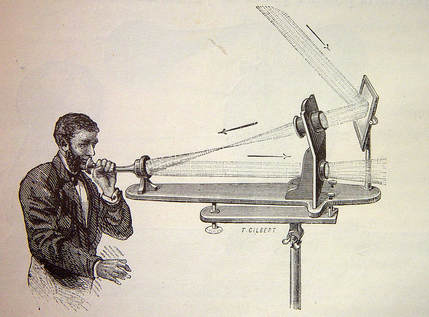 Photophone transmitter
Photophone transmitter
On Thursday, June 3, 1880, Alexander Graham Bell and Charles Sumner Tainter successfully transmitted speech through the modulation of light using a device they had invented called the photophone. It was not the first time that speech had been transmitted by light. A.C. Brown of London had accomplished the feat, almost two years earlier, in the fall of 1878. Indeed, Bell and Tainter had themselves successfully used an early prototype of the photophone in Bell's laboratory in February of 1880, with Tainter singing "Auld Lang Syne" into the transmiter of the photophone. The June 3 demonstration, however, was the first formal trial of the photophone over a considerable distance, namely 700 feet.
The photophone used on June 3 had a transmitter that was comprised of a diaphragm mirror mounted at the end of a speaking tube. The diaphragm mirror was composed of a very thin and flexible plane mirror that could become alternately convex and concave when subjected to sound waves from the speaking tube. Sunlight was focused on the diaphragm mirror by a pair of lens mounted a short distance from the speaking tube.
The receiver of the photophone was comprised of a parabolic mirror with a photoconductive cell mounted at its focal point. The photoconductive cell was connected into a circuit that included a battery and a telephone receiver. The photoconductive cell used gray selenium to change the resistance of the circuit based on the amount of light it was exposed to. This change in resistance (i.e., varying current) was then translated into sound by the telephone receiver.
Selenium's photoconductive properties had been discovered in 1873 by Willoughby Smith, a British electrical engineer. Werner Siemens of Germany developed a process for producing gray selenium with high sensitivity and constructed the first commercial selenium-based photoconductive cell in 1876. The Siemens process for forming gray selenium, however, was complex and required several days to perform. In the course of developing their photophone, Bell and Tainter discovered a much simpler process for producing highly sensitive gray selenium, which only took a matter of minutes to perform. In addition, Bell and Tainter developed a number of different designs for selenium cells that operated with much less resistance than the Siemens cells.
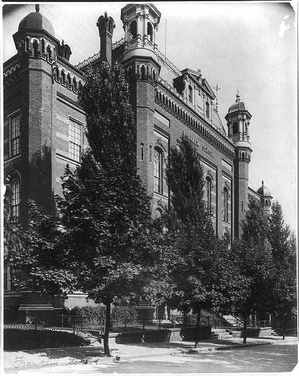 Franklin School House
Franklin School House
For their historic June 3, 1880 test, Tainter and Bell positioned the transmitter and receiver of the photophone in two different buildings in Washington D.C. The transmitter was mounted on the roof of the Franklin School House, while the receiver was arranged in one of the windows of Bell's laboratory at 1325 L Street, about a block away. Tainter positioned himself at the transmitter, while Bell positioned himself at the receiver.
On the roof of the Franklin School House, Tainter spoke into the speaking tube, saying "Mr. Bell if you hear what I say, come to the window and wave your hat." Tainter's voice caused the diaphragm mirror to oscillate and thereby modulate the concentrated sunlight, which was transmitted to the parabolic mirror of the receiver in Bell's laboratory. At the receiver, the modulated light was focused onto the photoconductive cell, which converted it into modulating current. The modulating current, in turn, was converted into speach by the telephone receiver, which Bell listened to. In response to what he heard, Bell went to the window and waved his hat. The first real wireless telephone message had just been sent.
At the time of its introduction to the world, the photophone held great promise for revolutionizing communication. Unfortunately, the photophone was never really commercialized because it could only be used under ideal conditions, where there was no interference with the transmitted beam of light. Versions of the photophone, however, were used by the militiaries of various countries during World War I and World War II. The first such use of a photophone was by the German Navy during World War I. The photophone employed by the German Navy used a carbon arc lamp and had an operable range of up to 7 miles.
On the roof of the Franklin School House, Tainter spoke into the speaking tube, saying "Mr. Bell if you hear what I say, come to the window and wave your hat." Tainter's voice caused the diaphragm mirror to oscillate and thereby modulate the concentrated sunlight, which was transmitted to the parabolic mirror of the receiver in Bell's laboratory. At the receiver, the modulated light was focused onto the photoconductive cell, which converted it into modulating current. The modulating current, in turn, was converted into speach by the telephone receiver, which Bell listened to. In response to what he heard, Bell went to the window and waved his hat. The first real wireless telephone message had just been sent.
At the time of its introduction to the world, the photophone held great promise for revolutionizing communication. Unfortunately, the photophone was never really commercialized because it could only be used under ideal conditions, where there was no interference with the transmitted beam of light. Versions of the photophone, however, were used by the militiaries of various countries during World War I and World War II. The first such use of a photophone was by the German Navy during World War I. The photophone employed by the German Navy used a carbon arc lamp and had an operable range of up to 7 miles.


